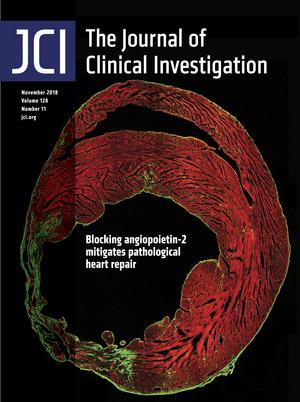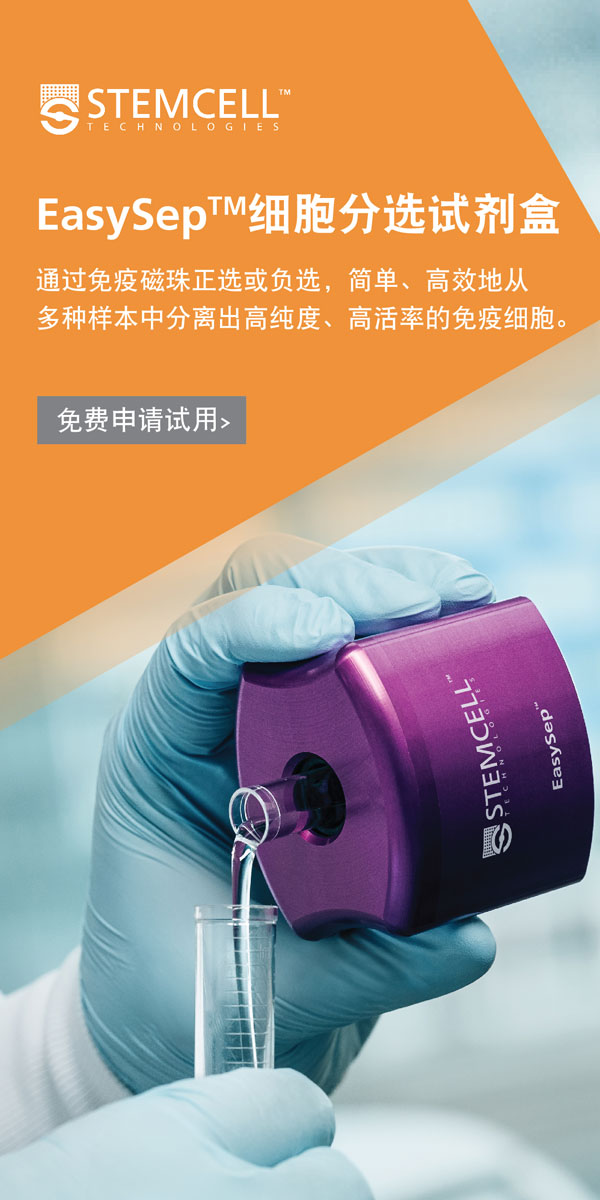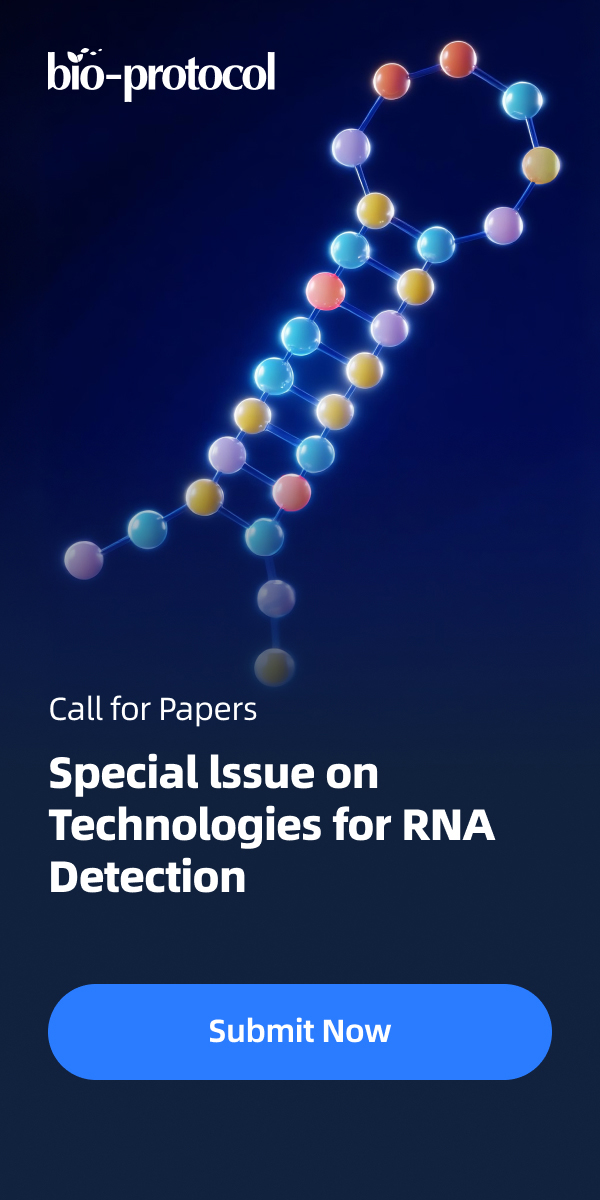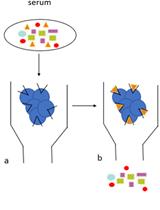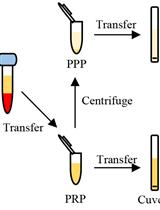- EN - English
- CN - 中文
Quantification of Serum Ovalbumin-specific Immunoglobulin E Titre via in vivo Passive Cutaneous Anaphylaxis Assay
通过体内被动皮肤过敏试验定量血清卵清蛋白特异性免疫球蛋白E滴度
发布: 2019年03月05日第9卷第5期 DOI: 10.21769/BioProtoc.3184 浏览次数: 6168
评审: Lokesh KalekarVishal NehruPorkodi Panneerselvam

相关实验方案
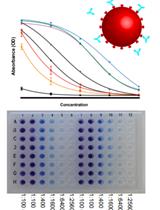
一种高通量自动ELISA检测SARS-CoV-2刺突蛋白IgG抗体的方法
Juliana Conkright-Fincham [...] Jay R. Unruh
2022年01月20日 4501 阅读
Abstract
Murine models of allergic airway disease are frequently used as a tool to elucidate the cellular and molecular mechanisms of tissue-specific asthmatic disease pathogenesis. Paramount to the success of these models is the induction of experimental antigen sensitization, as indicated by the presence of antigen-specific serum immunoglobulin E. The quantification of antigen-specific serum IgE is routinely performed via enzyme-linked immunosorbent assay. However, the reproducibility of these in vitro assays can vary dramatically in our experience. Furthermore, quantifying IgE via in vitro methodologies does not enable the functional relevance of circulating IgE levels to be considered. As a biologically appropriate alternative method, we describe herein a highly reproducible in vivo passive cutaneous anaphylaxis assay using Sprague Dawley rats for the quantification of ovalbumin-specific IgE in serum samples from ovalbumin-sensitized murine models. Briefly, this in vivo assay involves subcutaneous injections of serum samples on the back of a Sprague Dawley rat, followed 24 h later by intravenous injection of ovalbumin and a blue detection dye. The subsequent result of antigen-IgE mediated inflammation and leakage of blue dye into the initial injection site indicates the presence of ovalbumin-specific IgE within the corresponding serum sample.
Keywords: Asthma (哮喘)Background
Allergic asthma is a complex inflammatory disease, the development of which involves multiple intricate gene-environment interactions. A defining factor of the genetic component for disease inception is the predisposition to developing allergen-specific immunoglobulin (Ig) E to common allergens, otherwise known as atopy (Sly et al., 2008). As such, allergic (atopic) sensitization to innocuous perennial aeroallergens during early childhood is now recognized as a fundamental risk factor in the establishment of potentially life-long allergic asthmatic disease (Illi et al., 2006; Sly et al., 2008), particularly when sensitization occurs to multiple aeroallergens (Stoltz et al., 2013).
Murine models have long provided a means to investigate the cellular and molecular mechanisms that drive onset and progression of allergic airway diseases such as allergic asthma (Kumar et al., 2016). In this regard, mice are typically experimentally sensitized to a model antigen, resulting in CD4+ T-helper (Th) type 2-driven inflammation and the production of antigen-specific IgE (Mincham et al., 2018); the hallmark feature of allergic sensitization. Quantification of circulating serum antigen-specific IgE from antigen sensitized murine models is routinely performed by enzyme-linked immunosorbent assay (ELISA). However, in our experience, these in vitro assays lack the necessary reproducibility for accurate detection of ovalbumin (OVA)-specific serum IgE in both Brown Norway rat and BALB/c mouse models of allergic airway disease. Furthermore, the use of in vitro techniques disregards the functional activity of antigen-specific IgE in a biologically relevant setting.
To combat the disadvantages of in vitro IgE quantification assays, we herein detail a highly reproducible in vivo passive cutaneous anaphylaxis (PCA) assay which enables both the quantification and assessment of biological activity of OVA-specific IgE within serum samples from OVA-sensitized murine models. In this regard, the localized cutaneous anaphylaxis response observed from an OVA-specific IgE positive sample is indicative of mast cell degranulation driven via OVA-induced cross-linking of OVA-specific IgE (Kawakami and Galli, 2002). The resultant release of mast cell granule-derived proinflammatory mediators exemplified by histamine, prostaglandin, leukotriene and tryptase, ultimately stimulates vascular permeability and the subsequent extravasation of the blue detection dye (Bradding and Arthur, 2016). While this protocol has been described for quantifying OVA-specific IgE in murine serum samples, it could be adapted to assess alternative model antigens.
Materials and Reagents
- 1.5 ml screw cap micro tube (SARSTEDT, catalog number: 72.703.600)
- 5 ml screw cap tube (SARSTEDT, catalog number: 60.9921.524)
- 27 G x ½” 1 ml Insulin syringe (Terumo, catalog number: SS-10M2713A)
- 26 G x ½” needle (Terumo, catalog number: NN-2613R)
- 23 G x 1¼” needle (Terumo, catalog number: NN-2332R)
- 3 ml syringe (Terumo, catalog number: SS-03L)
- 5 ml syringe (Terumo, catalog number: SS-05L)
- 80 μm syringe filter (Sartorius, Minisart®, catalog number: 16592)
- 45 μm syringe filter (Sartorius, Minisart®, catalog number: 16555)
- 96-well microplate (Thermo Fisher Scientific, NuncTM MicroWellTM, catalog number: 260860)
- Cotton wool roll (BNS Medical, catalog number: 71841-14)
- Marker pen
- Aluminum foil
- Male Sprague Dawley rats > 10 weeks old (Animal Resource Centre, Murdoch, Australia)
- Serum samples derived from ovalbumin-sensitized murine models
- Evans blue (Sigma-Aldrich, catalog number: E2129-10G), store at room temperature
- Ovalbumin (OVA) lyophilized powder (Sigma-Aldrich, catalog number: A5503), store at 4 °C
- Sterile Water for Irrigation (Baxter, catalog number: 2F7114), store at room temperature
- Sterile Water for Injection (Pfizer, catalog number: 25020010), store below 25 °C
- Chloral hydrate crystalized (Sigma-Aldrich, catalog number: 23100-250G)
- Sterile Phosphate buffered saline (PBS) (made in house)
- Topical ophthalmic ointment (Novartis, Viscotears®, catalog number: 1AD031591)
- Pentobarbitone sodium (Virbac, Lethabarb®, catalog number: LETH-1)
- Isoflurane (Henry Schein, IsoThesia®, catalog number: 988-3244), store below 25 °C in the dark
- 5.71% chloral hydrate solution (C2H3Cl3O2) (see Recipes)
- 1% Evans Blue dye stock solution (see Recipes)
- 10 mg/ml ovalbumin stock solution (see Recipes)
- 1:1 Ovalbumin-Evans blue dye solution for one rat (see Recipes)
Equipment
- 100 ml Schott bottle (Sigma-Aldrich, Duran®, catalog number: Z305170)
- 500 ml Bottle Top Filter, 0.2 μm pore size (Thermo Fisher Scientific, Nalgene® Rapid-FlowTM, catalog number: 595-4520)
- Animal hair clippers (Wahl, KM CordlessTM, catalog number: WA-9596-212)
- Warming pad (Kent Scientific Corporation, catalog number: DCT-25)
- Small animal anesthesia system (Kent Scientific Corporation, SumnoSuite®, catalog number: SS-01)
- 4 °C refrigerator
- -20 °C freezer
Software
- GraphPad Prism (GraphPad software, version 7.0a)
Procedure
文章信息
版权信息
© 2019 The Authors; exclusive licensee Bio-protocol LLC.
如何引用
Mincham, K. T., Leffler, J., Scott, N. M., Lauzon-Joset, J., Stumbles, P. A., Holt, P. G. and Strickland, D. H. (2019). Quantification of Serum Ovalbumin-specific Immunoglobulin E Titre via in vivo Passive Cutaneous Anaphylaxis Assay. Bio-protocol 9(5): e3184. DOI: 10.21769/BioProtoc.3184.
分类
免疫学 > 抗体分析 > 抗体检测
细胞生物学 > 基于细胞的分析方法
您对这篇实验方法有问题吗?
在此处发布您的问题,我们将邀请本文作者来回答。同时,我们会将您的问题发布到Bio-protocol Exchange,以便寻求社区成员的帮助。
Share
Bluesky
X
Copy link


